Special Report
States Trafficking the Most Guns to the Rest of the Country
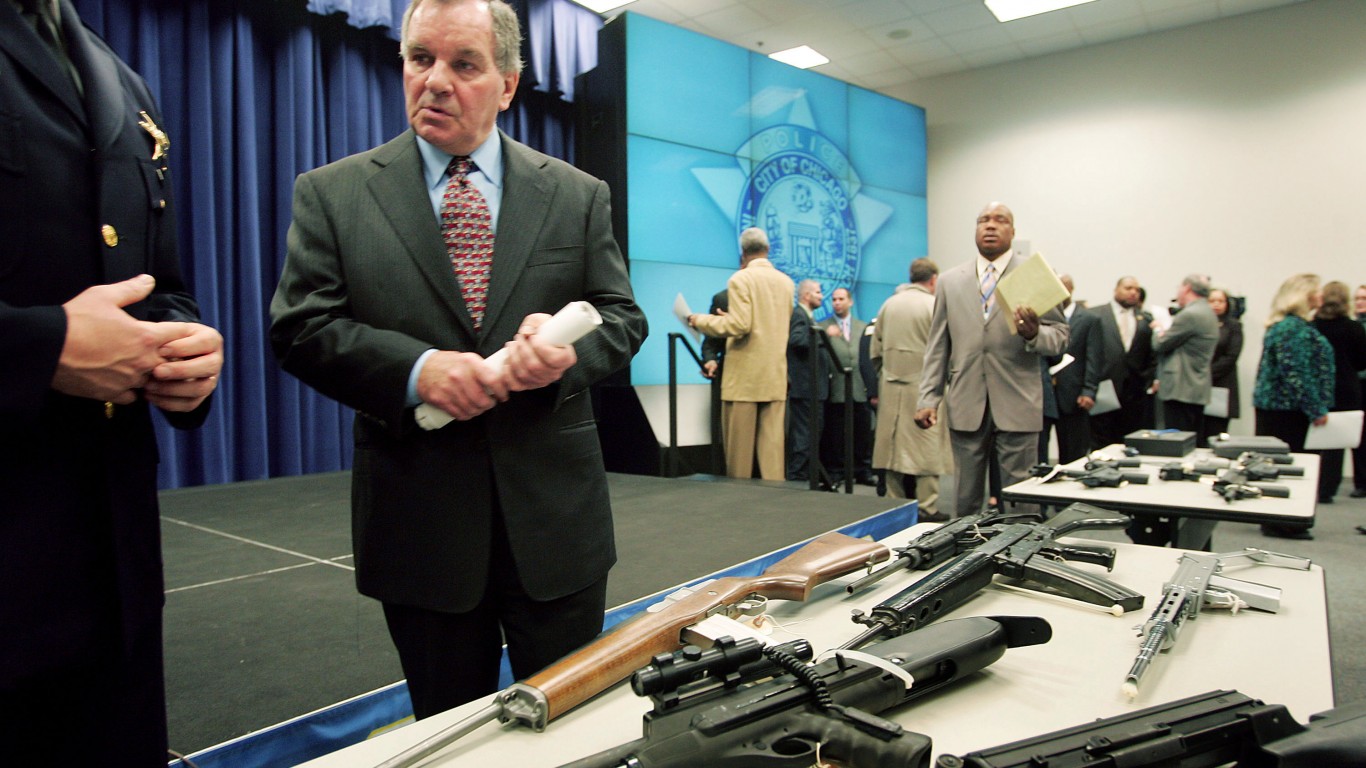
Published:

One of only three countries where gun ownership is a constitutional right, the U.S. has some of the most permissive gun control laws in the world. Beyond restricting fully-automatic weapons and requiring licensed gun dealers to run background checks on prospective buyers, the federal government does little to regulate firearms.
In the absence of strong federal laws, state governments have implemented their own policies — and the resulting patchwork of gun control laws is fueling a thriving black market. Each year, thousands of firearms move across state lines for illicit purposes, as guns purchased in the least restrictive states are redistributed in states with stricter gun policies.
Firearm tracing data from the Bureau of Alcohol, Tobacco, Firearms, and Explosives reflects the scope of the problem. When police recover a firearm suspected to have been involved in a crime, they can enlist the help of the ATF to trace the firearm and determine when and where it was originally purchased. Last year, the ATF traced over 107,000 firearms that were recovered by law enforcement in states they were not initially sold in.
While not all guns traced by the ATF were used in a crime — and not all firearms used for illicit purposes are traced — federal tracing data offers valuable insight into trends and geographic patterns related to interstate gun trafficking in the United States.
Using firearm tracing data from the ATF, 24/7 Wall St. identified the states trafficking the most guns to the rest of the country. We ranked all 50 states on the share of guns first sold there that were recovered by law enforcement in a different state in 2022.
The top 10 states on this list alone account for over half of all firearms that were recovered by law enforcement in 2022 in a different part of the country. Not surprisingly, the vast majority of these states have relatively few firearm restrictions, including no waiting periods or licensing requirements. Additionally, nine of them allow individuals to skirt federal background check requirements when buying from private sellers. (These are the states where anyone can get a gun today.)
The gun violence prevention group Giffords Law Center assigned seven of the 10 top ranking states on this list a letter grade of either “D-” or “F” for the strength of their gun laws — compared to only three of the 10 states supplying the fewest firearms to the rest of the country. (Here is a look at every state’s grade on gun laws.)
Geography also appears to play a role in interstate gun trafficking patterns. Often, the largest share of guns traced by the ATF to a given state were recovered by police in a bordering state. For example, over 1,200 firearms recovered by police in Florida in 2022 were traced back to the neighboring state of Georgia by the ATF.
Sometimes, trafficking patterns are influenced by both gun laws and geographic convenience. New York state, for example, has some of the strictest gun laws in the country. However, together with Georgia, a state with some of the least restrictive gun laws, New York is situated along the I-95 corridor. It is likely no coincidence that more than 1,000 firearms recovered by police in New York last year were determined to have been first sold in Georgia.
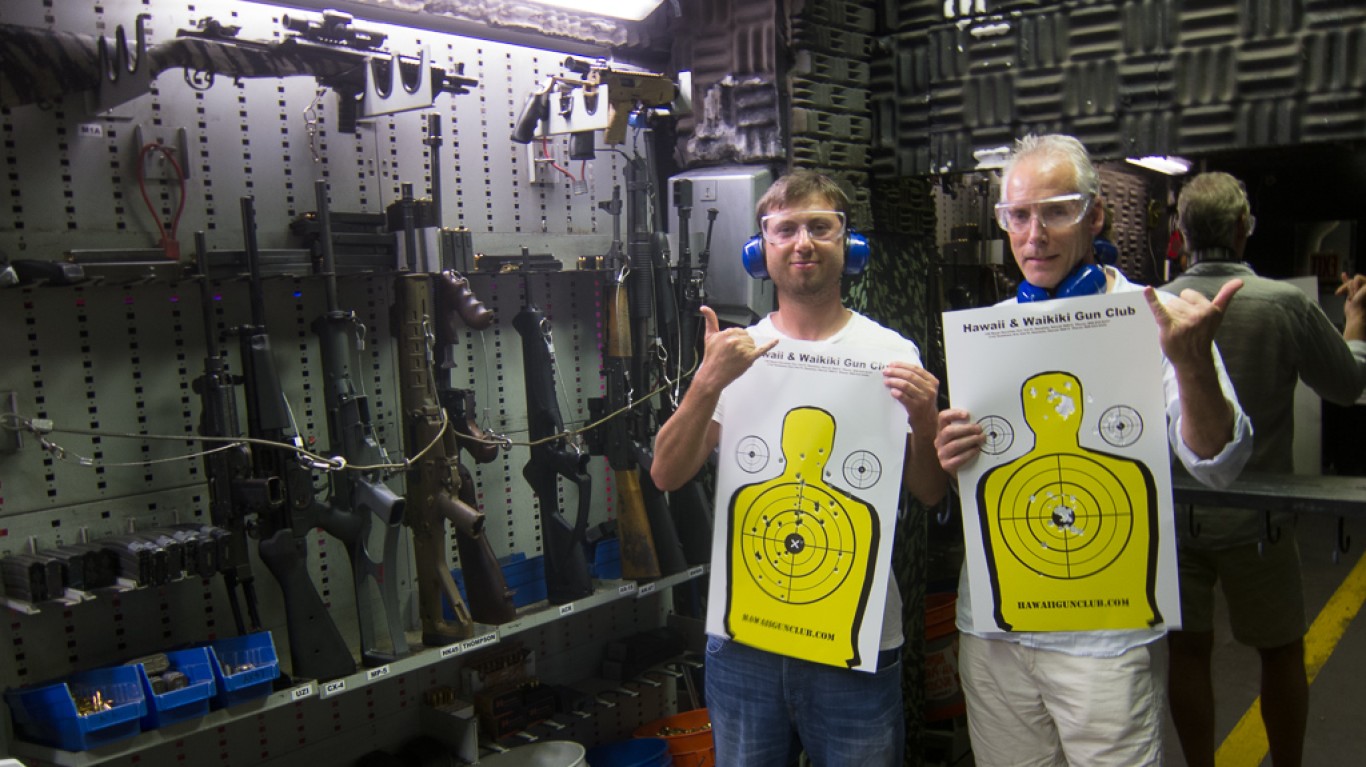

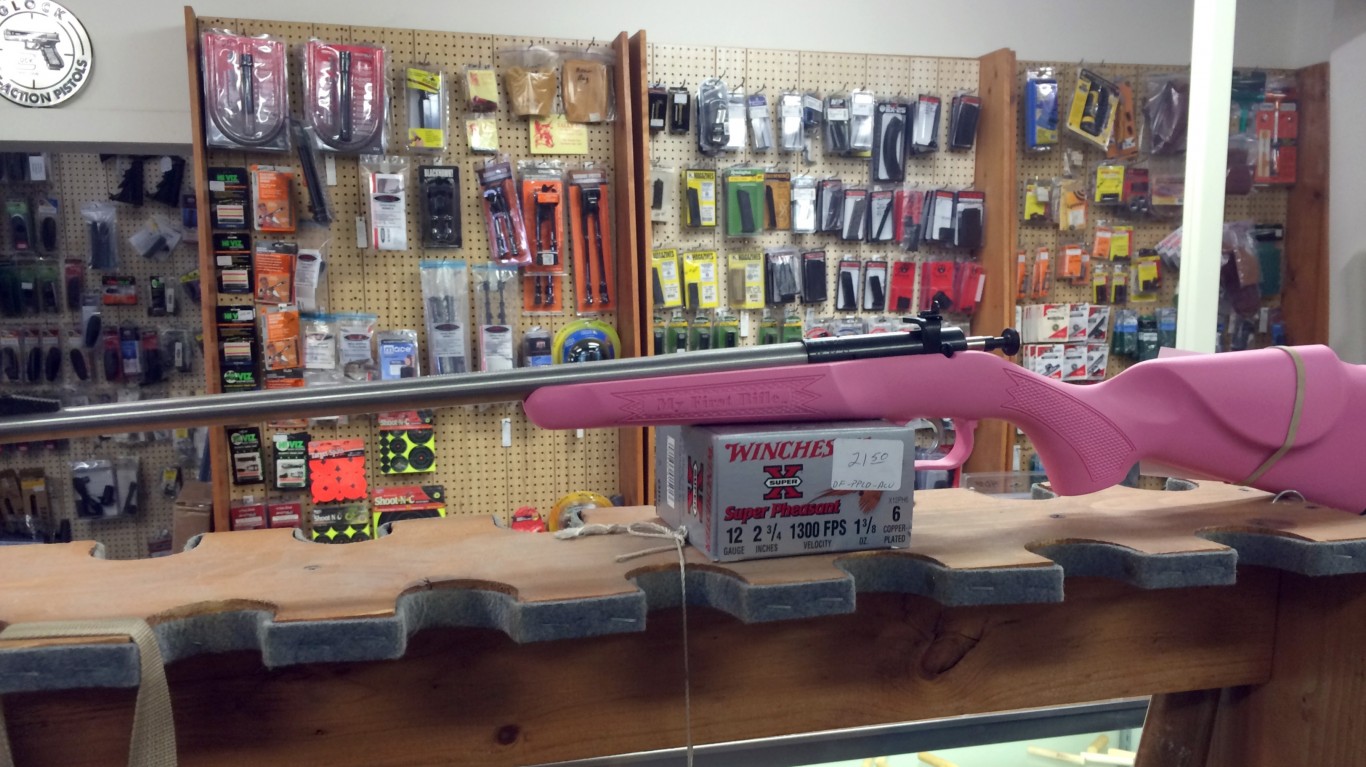


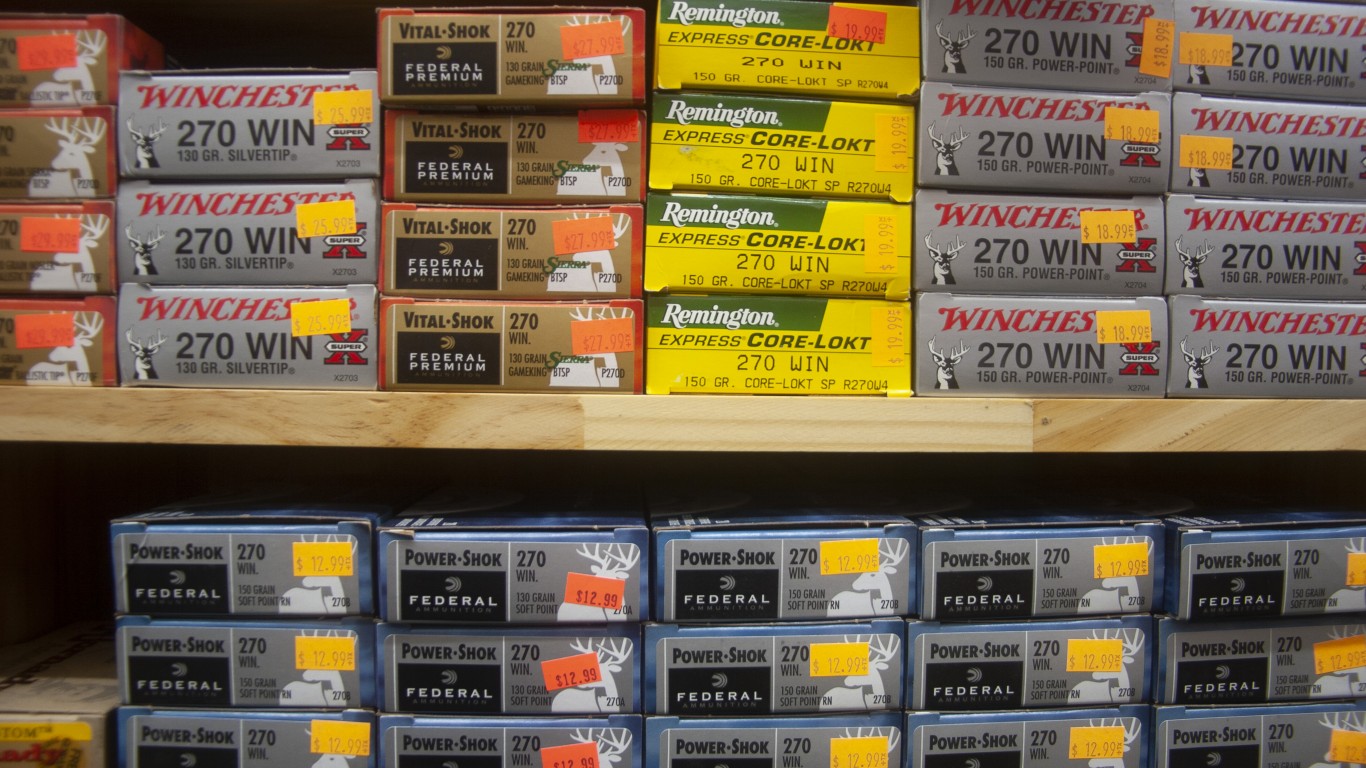
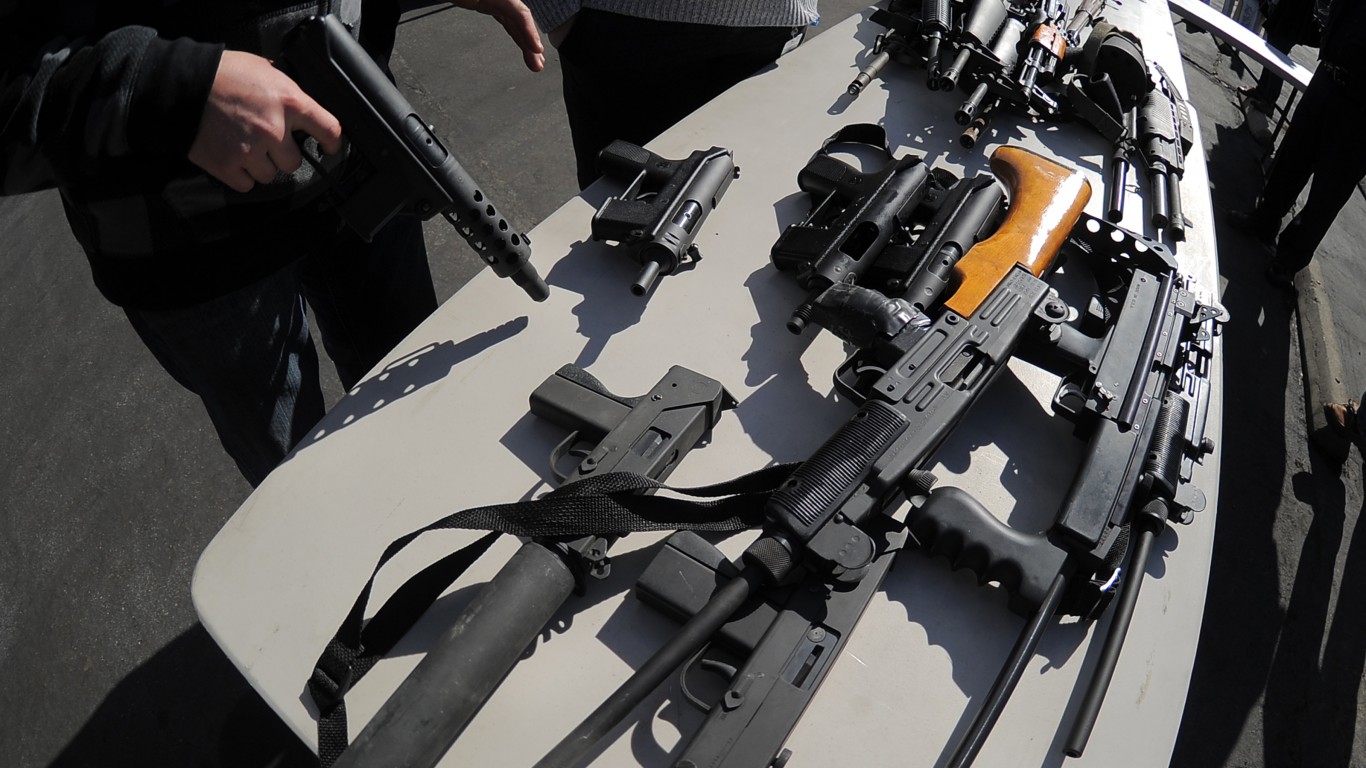
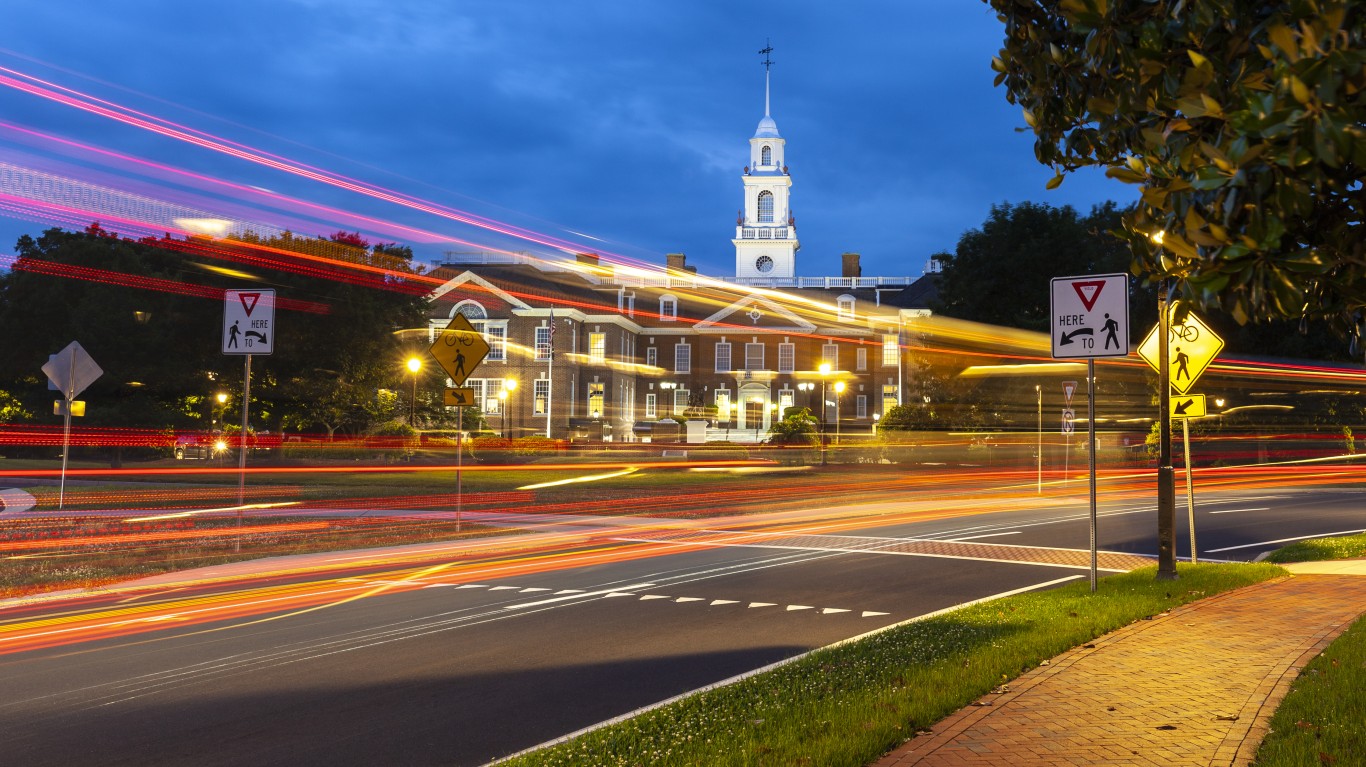






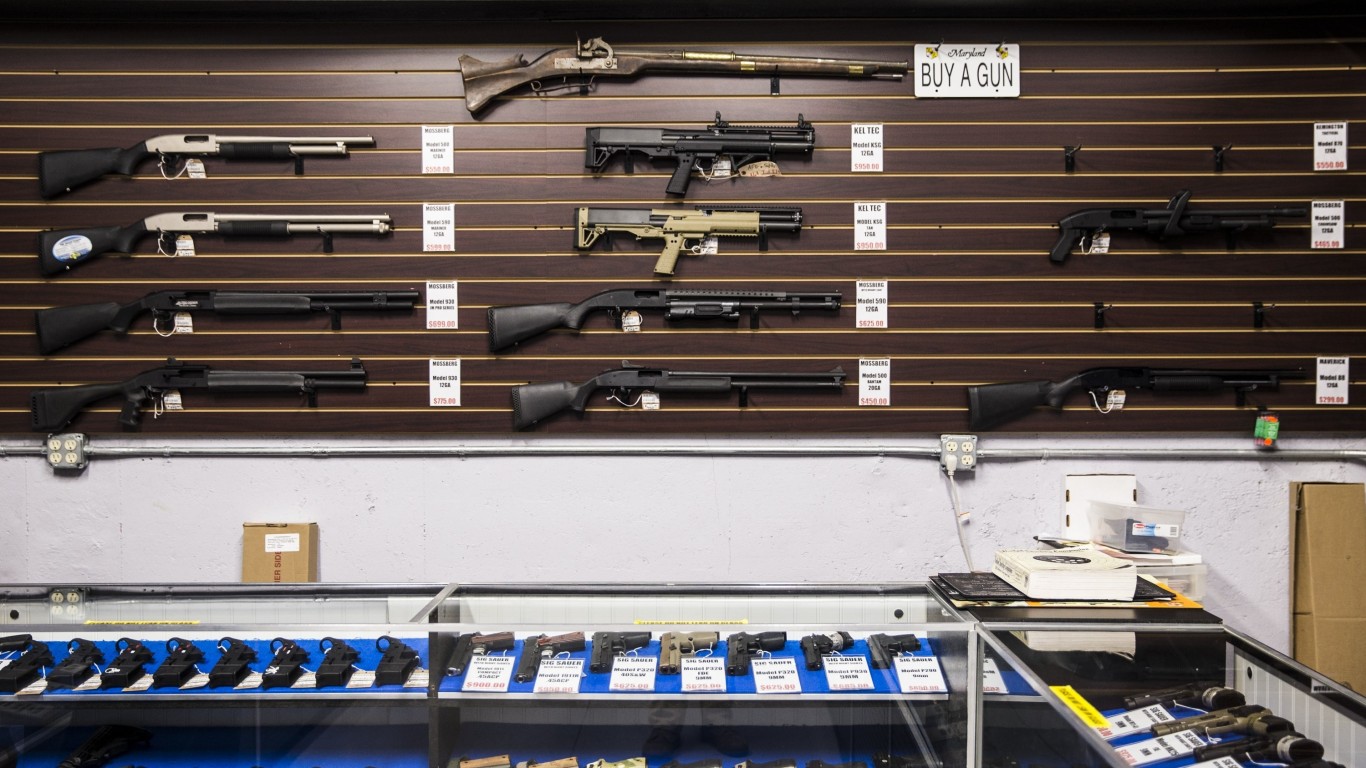

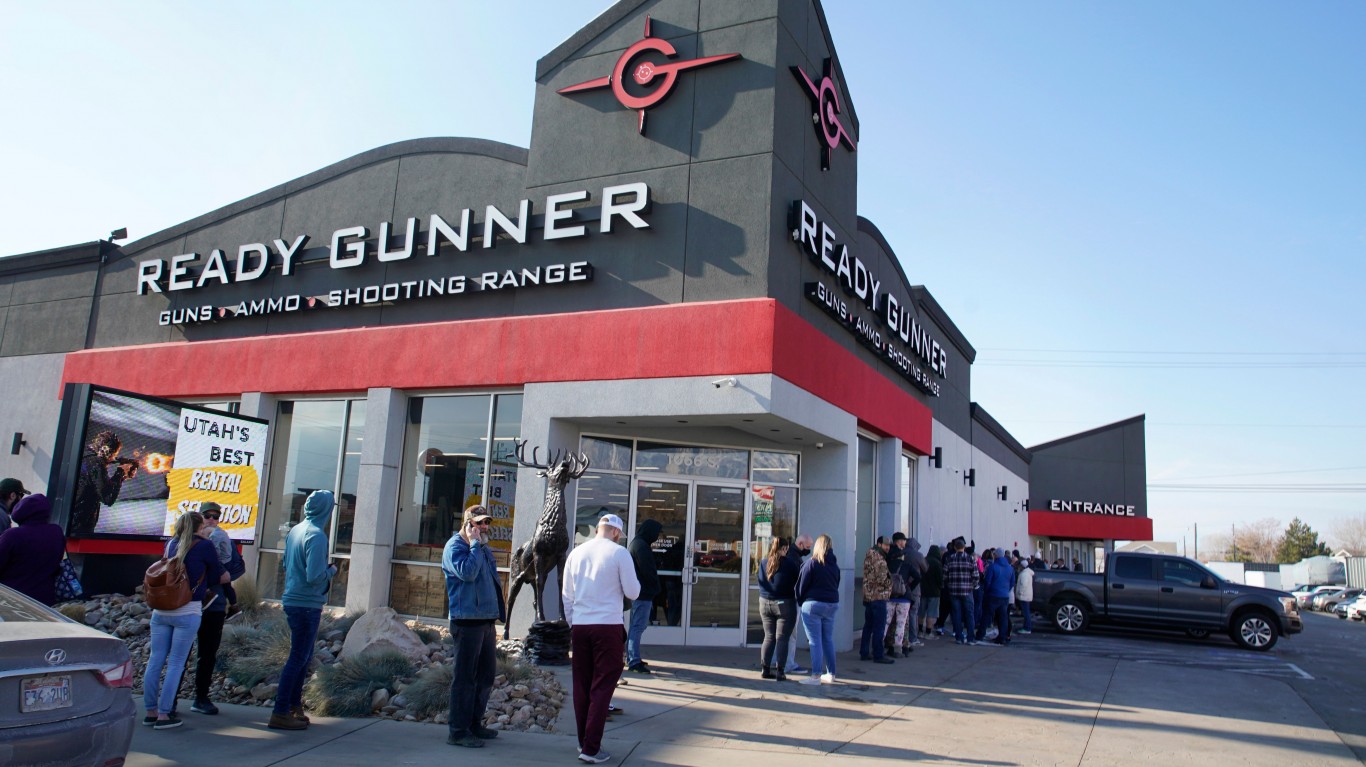
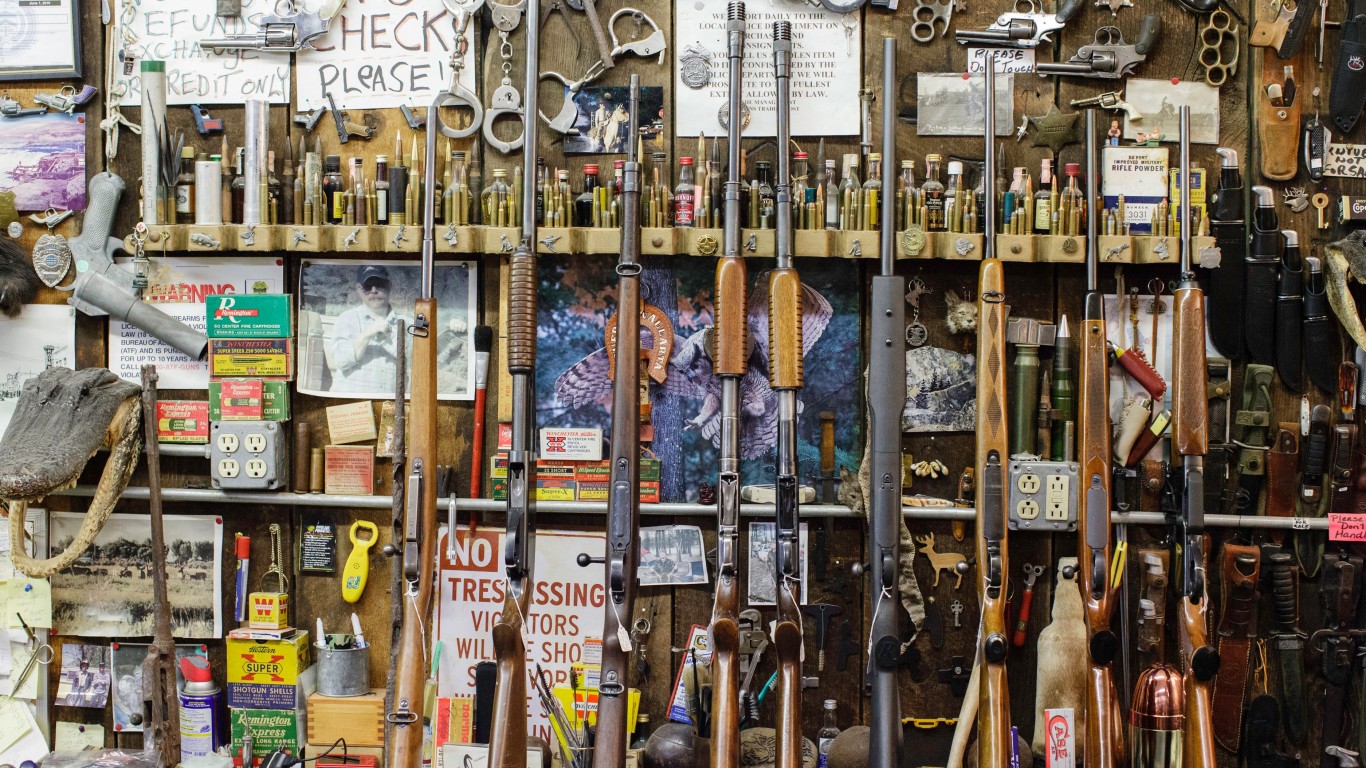

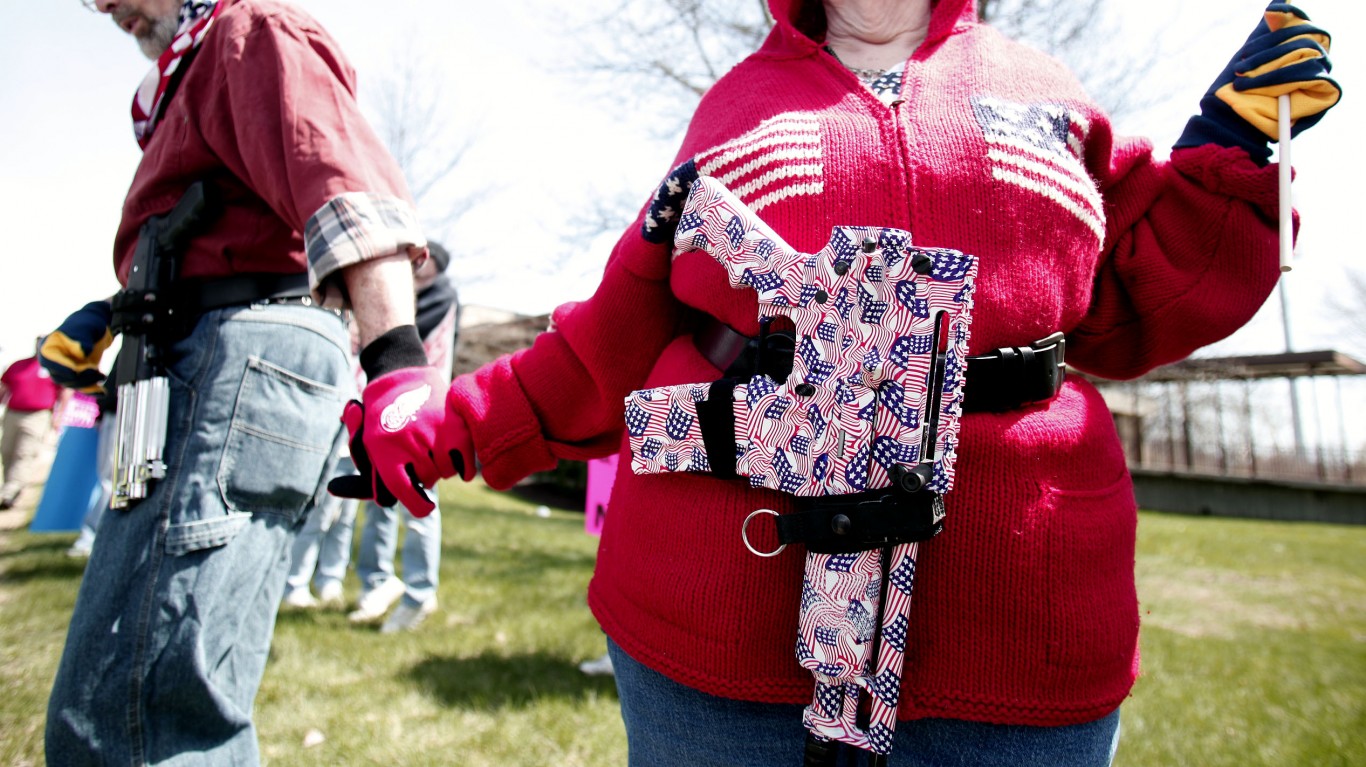
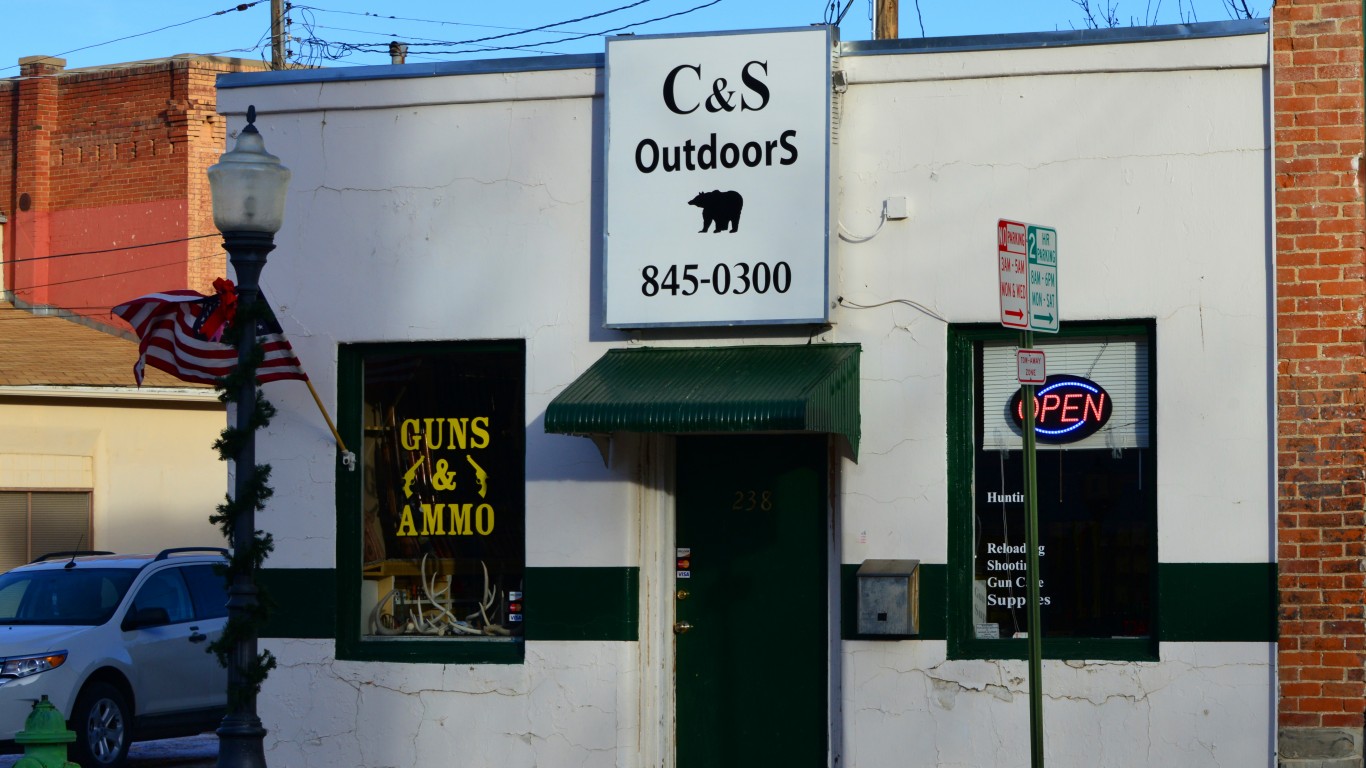
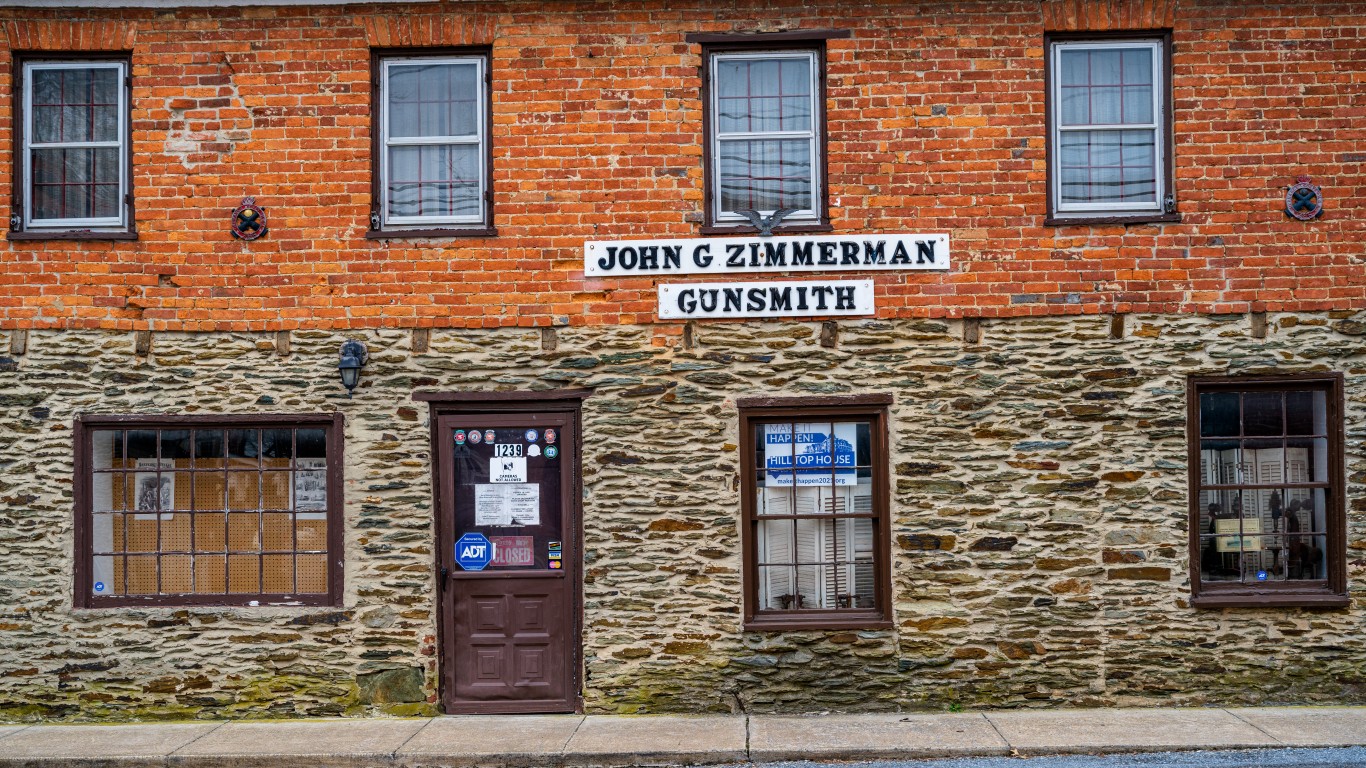

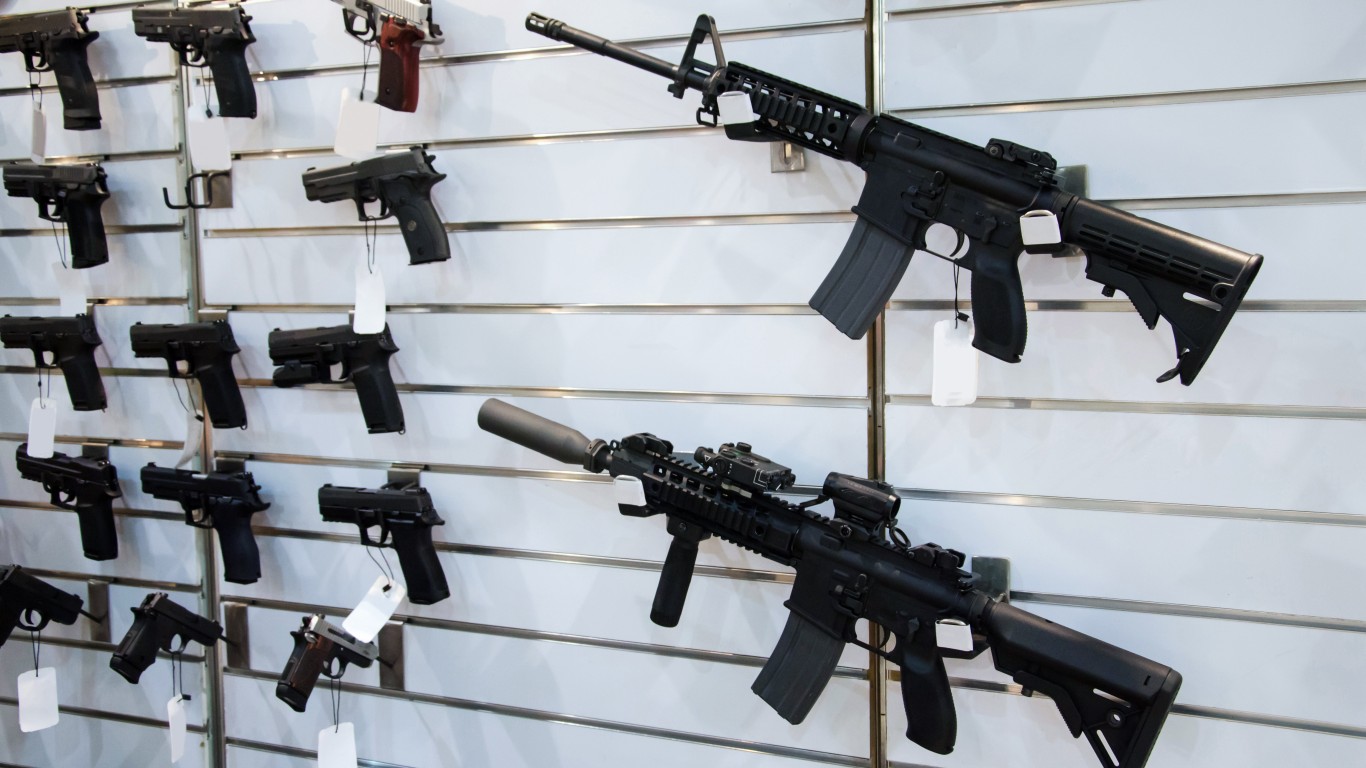
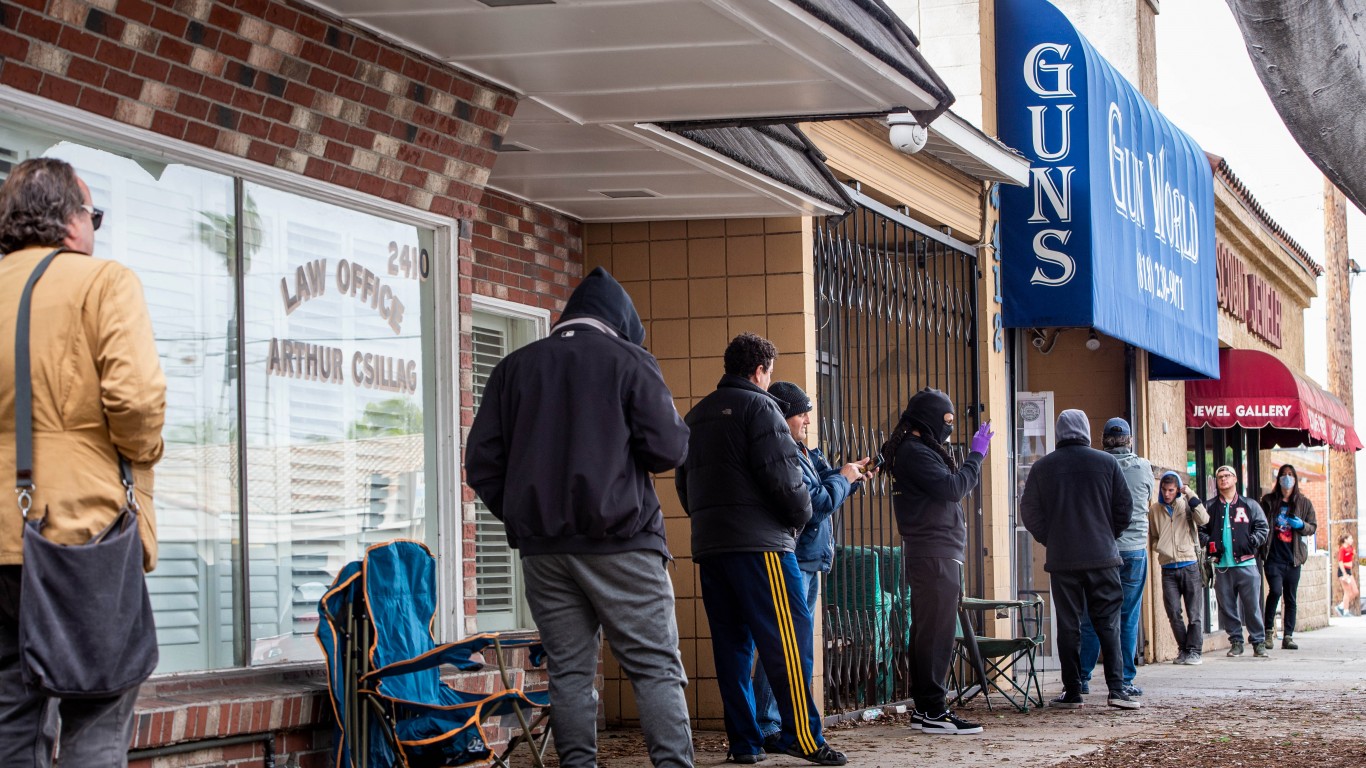
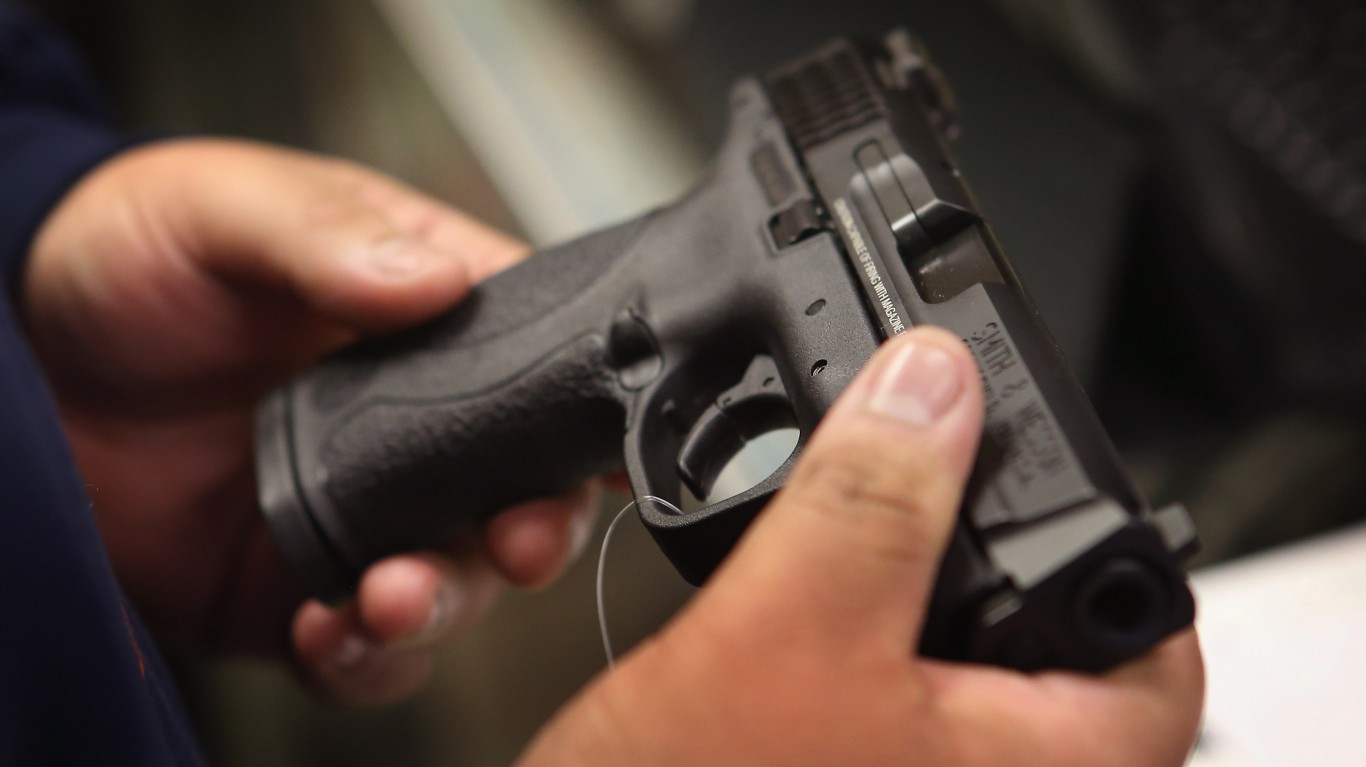
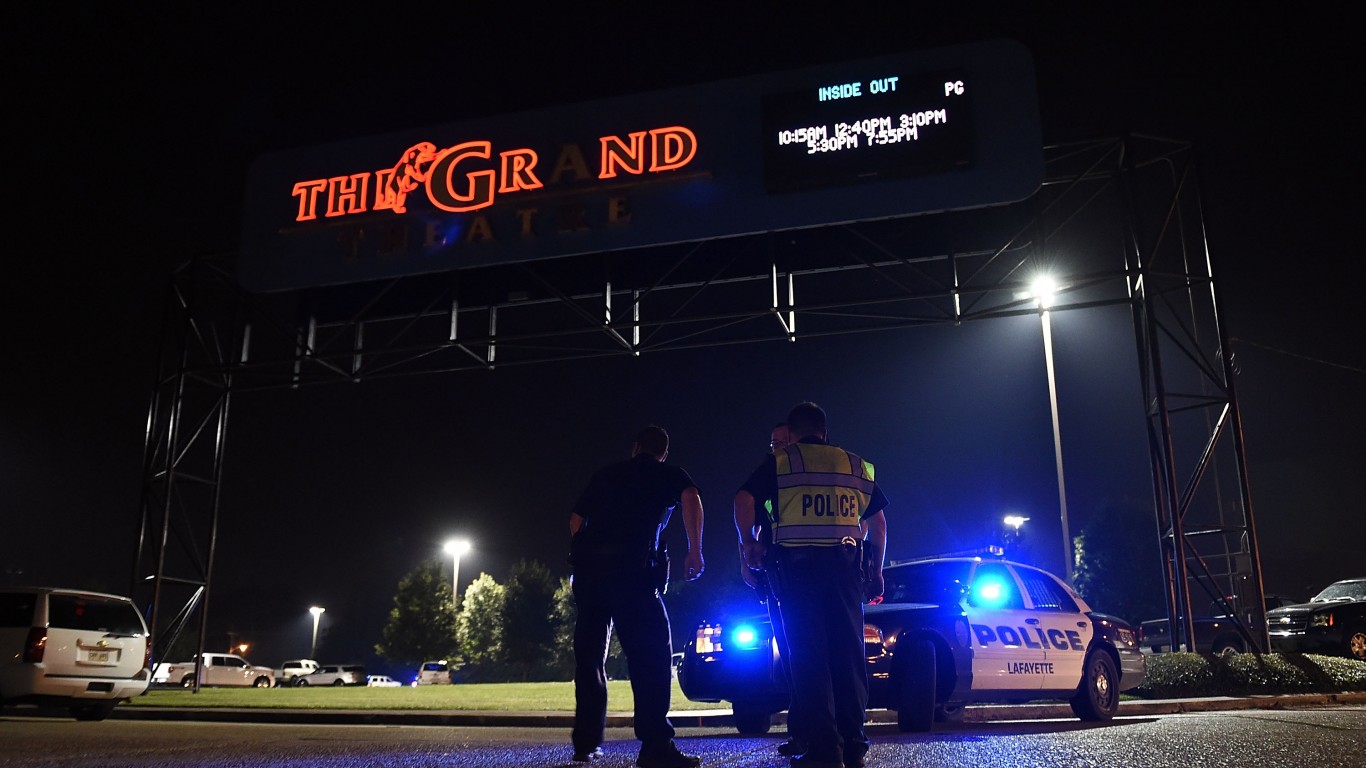


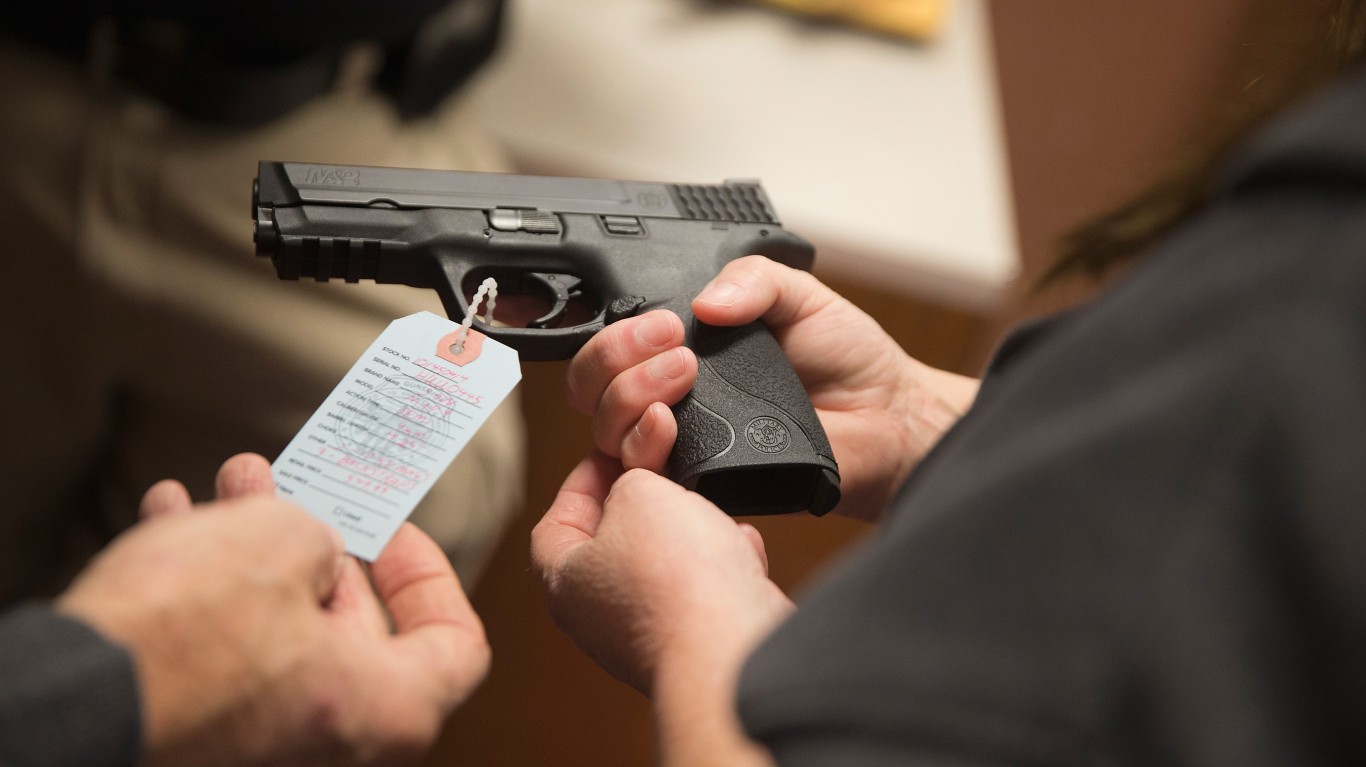
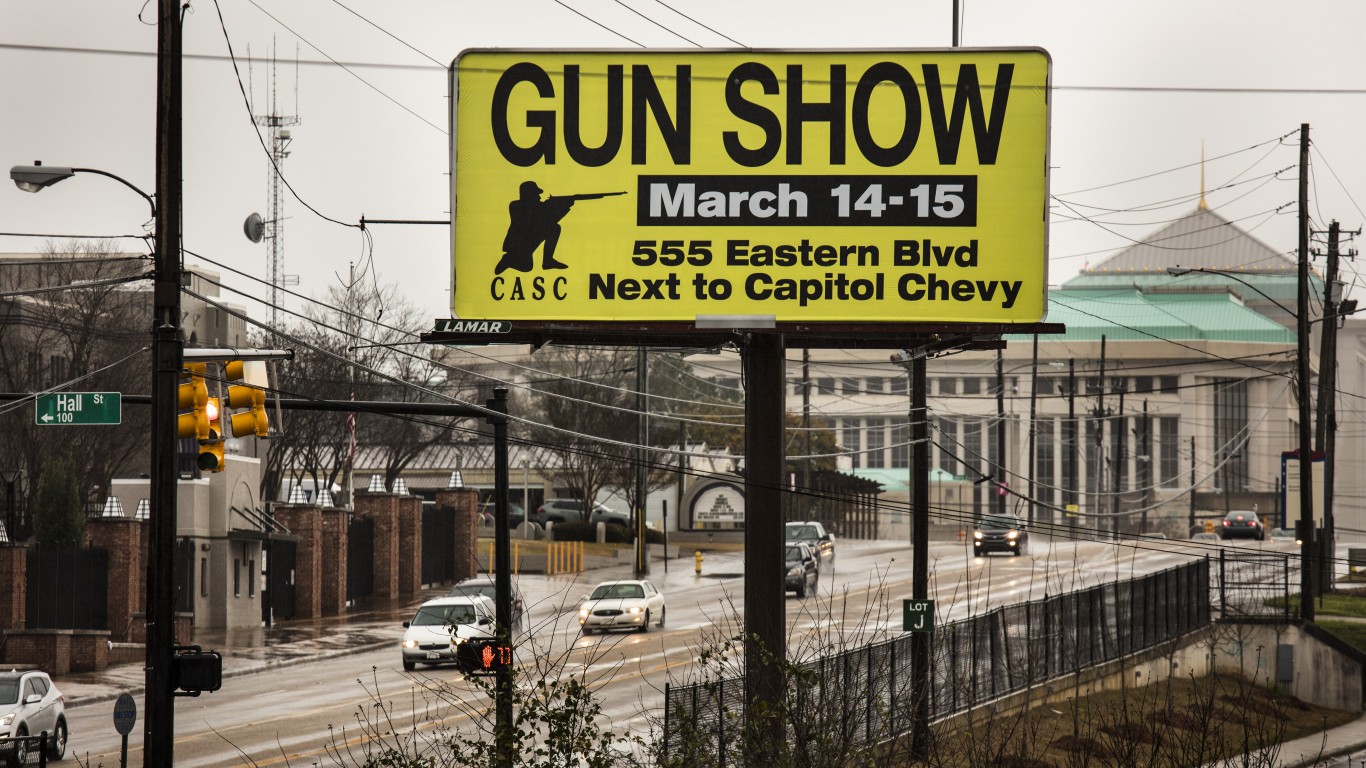
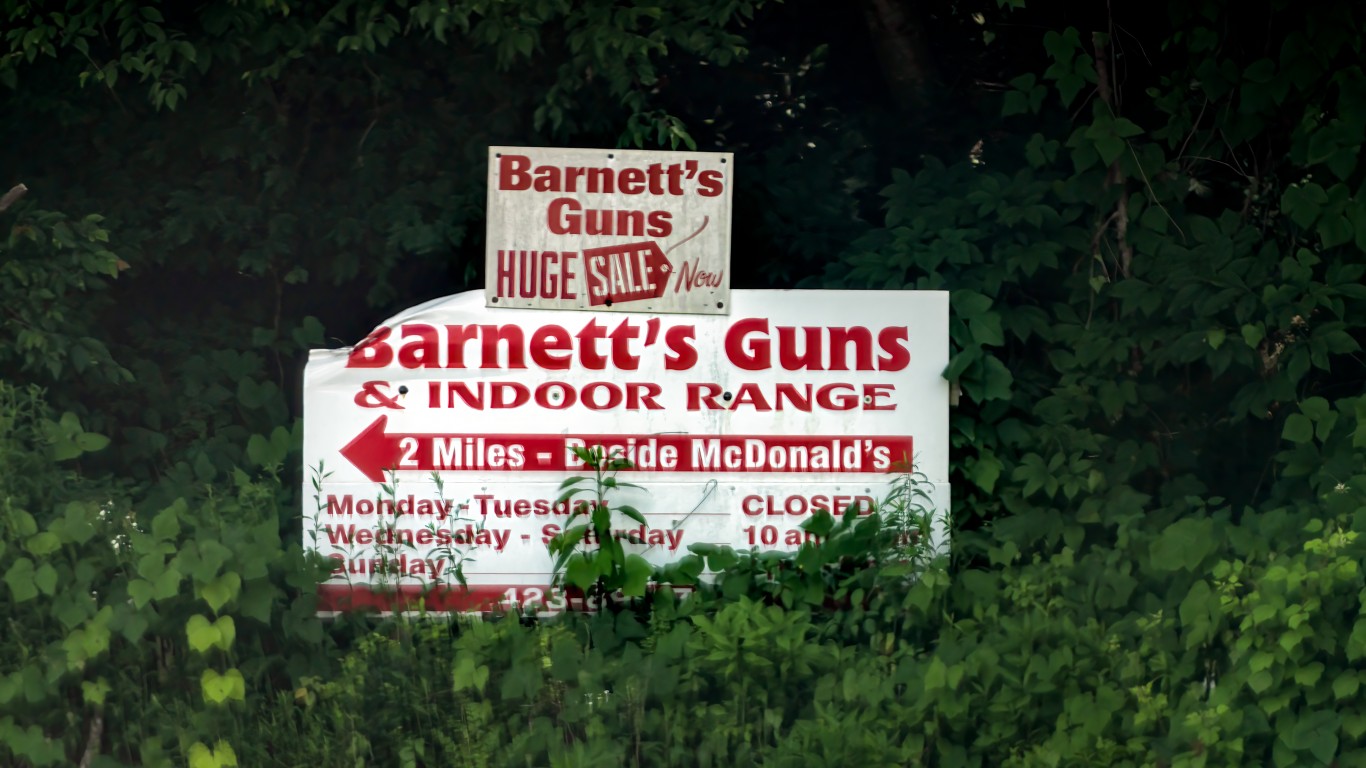



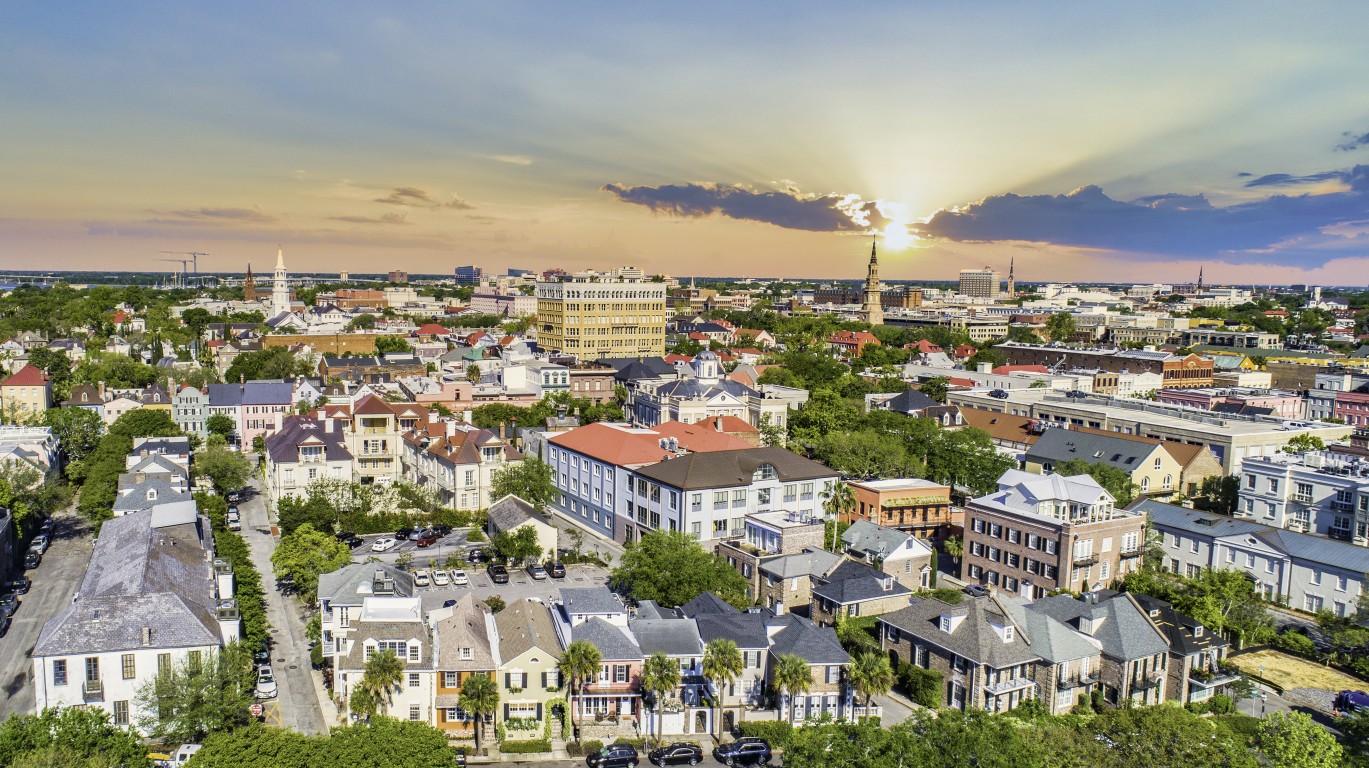
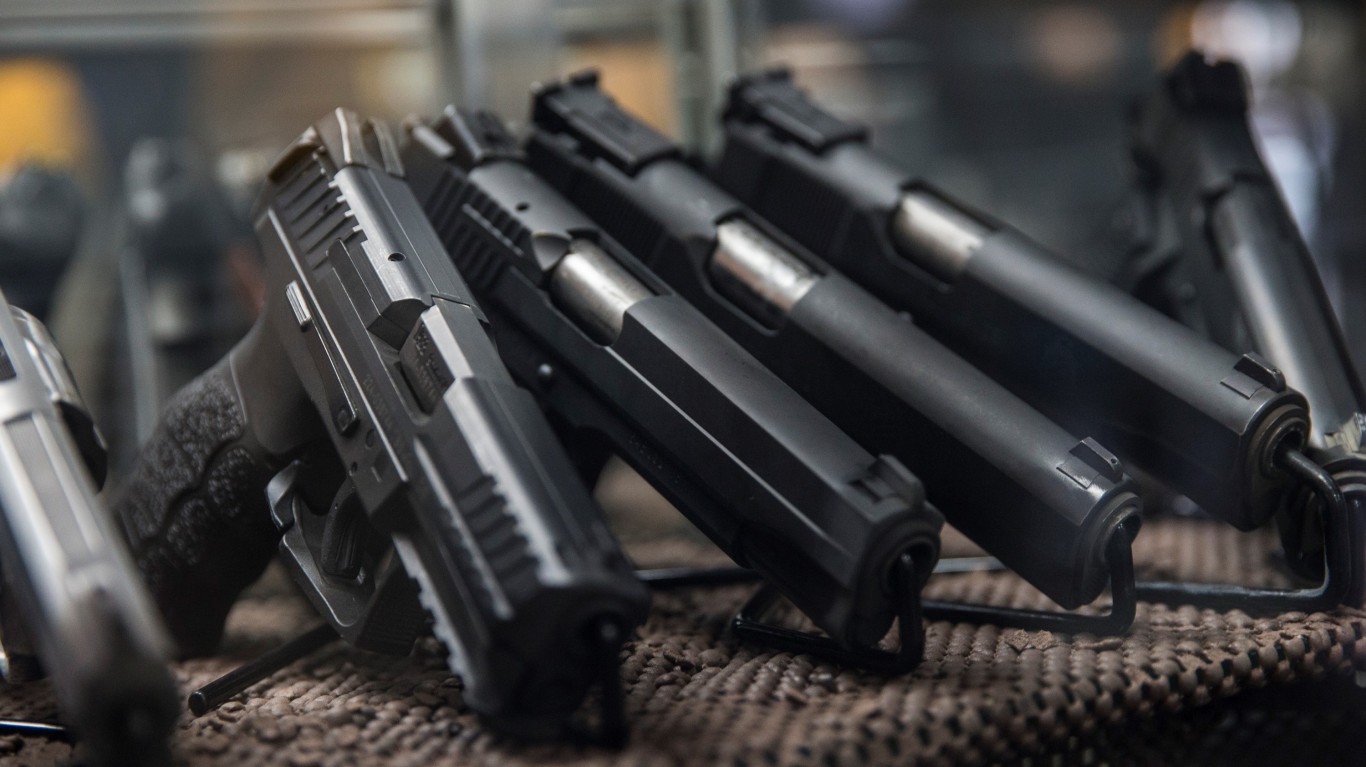
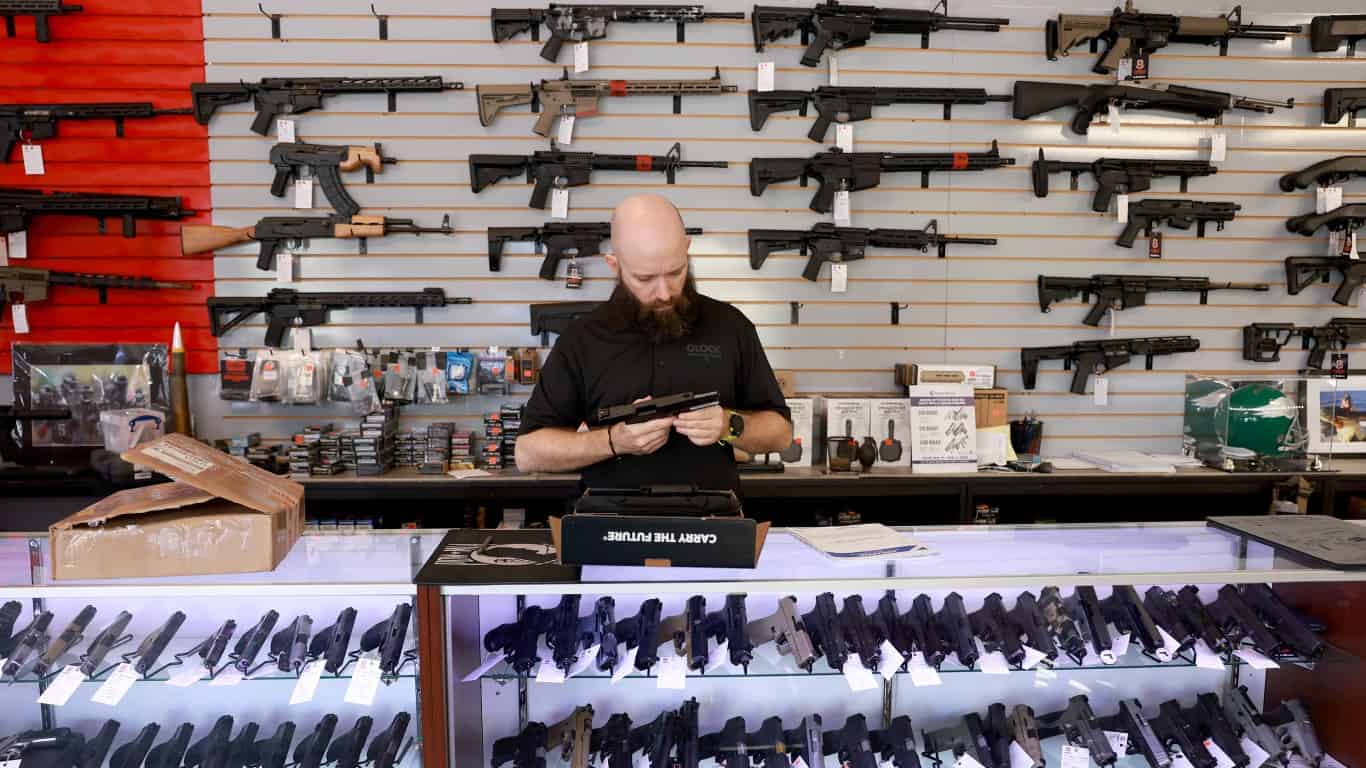

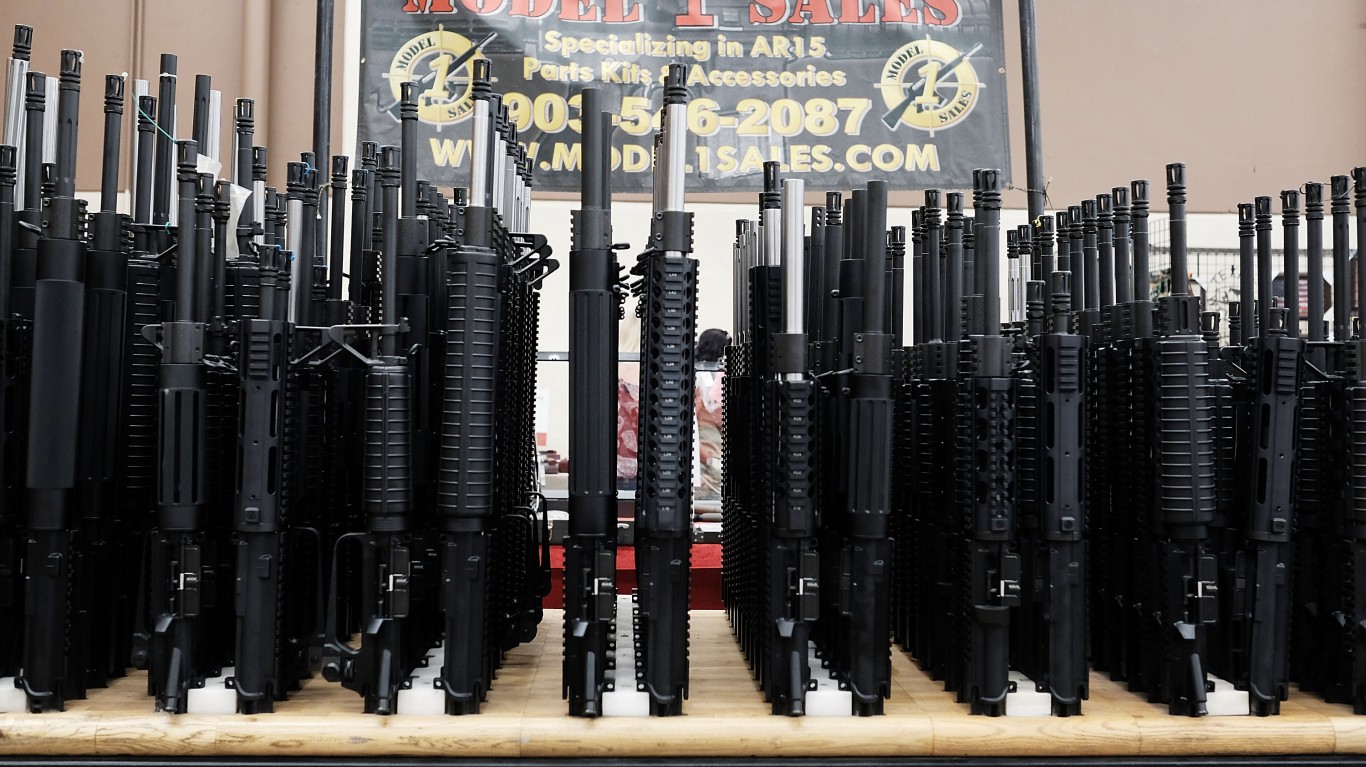

Start by taking a quick retirement quiz from SmartAsset that will match you with up to 3 financial advisors that serve your area and beyond in 5 minutes, or less.
Each advisor has been vetted by SmartAsset and is held to a fiduciary standard to act in your best interests.
Here’s how it works:
1. Answer SmartAsset advisor match quiz
2. Review your pre-screened matches at your leisure. Check out the advisors’ profiles.
3. Speak with advisors at no cost to you. Have an introductory call on the phone or introduction in person and choose whom to work with in the future
Thank you for reading! Have some feedback for us?
Contact the 24/7 Wall St. editorial team.